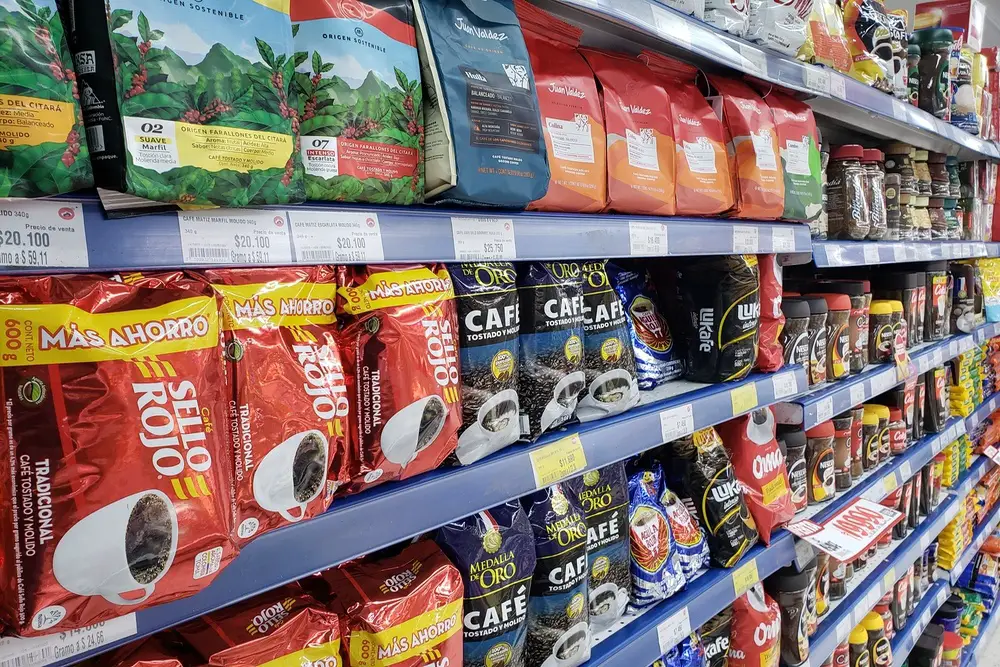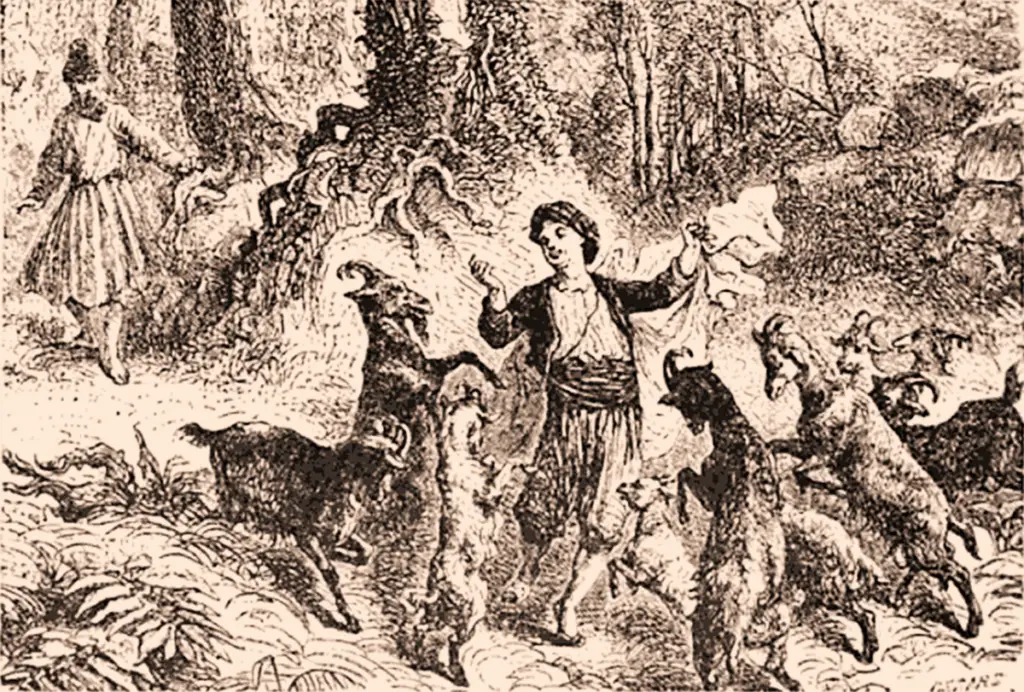All Kenyan coffee is sorted by size using a bean sieve after harvest. The AA grade is typically the largest bean and is considered one of the best coffees in the world.
Kenya Kirinyaga AA coffee is grown at high altitude in central Kenya. Production takes place deep in the tea belt of Kirinyaga County.
Table of Contents
History of coffee in Kenya
Kenya has an interesting and complicated coffee history. Although Kenya shares a large border with northern Ethiopia (the cradle of coffee), commercial coffee cultivation in Kenya began almost 300 years later. The varieties that made their way to Kenya had arrived in the Arabian Peninsula via Somali traders from Ethiopia in the 15th century. A long time to Europe and finally back to Africa in the 1890s by missionaries from Yemen and Bourbon Island.
Commercialization began with the establishment of British and other European owned estates in the early 20th century. The owners and British colonial government were keen to capture a large share of the hot beverage market by introducing coffee production to a country that was already a major tea producer. To ensure dominance in these fields, the colonial authorities forbade Kenyans from growing their own coffee and instead forced them to work as laborers on the plantations.
In the 1920s coffee was a major export and all coffee produced in the country was sold and controlled in the London market. The passage of the Coffee Act in 1933 restarted the marketing and sale of coffee in Kenya and created the Nairobi Coffee Exchange, a weekly auction that still handles most of Kenya’s coffee sales today.
Kenya defeated the colonialists in the 1960s, and many smallholders were given lands confiscated from large colonial and state plantations.
Today, most Kenyan farmers cultivate small plots of up to 150 coffee plants. Since the smallholders grow so little individually, many of them belong to a farmer’s cooperative. These co-ops operate washing facilities and select their own agents to market their coffees at auction or organize a private sale in what is known as the “second window”.
Coffee production in Kirinyaga
Kirinyaga District lies at the foot of Mount Kenya, from which it derives its name. Kirinyaga means “Crest of the White” in the Kikuyu language, a synonym for the beautiful snow-capped peaks.
The coffee farmers in this region of Kenya are smallholders and their crop consist of the SL28, SL34, Ruiru 11 and Batian varieties.
SL28 coffee
Is drought tolerant and capable of producing very good coffee but is prone to serious diseases. The species is widespread in Kenya, Malawi, Uganda and Zimbabwe.
SL34 coffee
Has excellent cup quality but is quite susceptible to cherry anthracnose (CBD). High altitude locations with abundant rainfall can use SL34. The plants are crooked with dark golden buds and some green-tipped stems. The side branches, due to their semi-straight development, tend to bend over the older main branches.
Ruiru coffee 11
Is a low growing, high yielding hybrid that is tolerant to coffee rot and immune to cherry anthracnose (CBD).
It is a variety that consists of several types. Catimor (sire-dam) and a selection of multiple crosses including K7, SL28, N39 and Rume Sudan (sire-sire) among others.
Batian coffee
A plant with good cup quality, cherry disease (CBD) tolerance, coffee rust tolerance and high yields.
Her unusual combination of highland cultivation and disease resistance makes her very suitable for small growers.
Coffee farms in Kirinyaga
Kiunyu Kirinyaga
Founded in the 1960s, the Kiunyu factory sources its coffee from farmers in the surrounding villages. The main coffees grown in the region are SL 34 and Ruiru 11, with SL 34 accounting for 99% of all coffee processed by the factory.
The annual harvest of Kenya’s Kiunyu-Kirinyaga falls between August and January, and these special coffee specialties are then processed using the washing process. This is a third wave coffee appreciated for its sweet flavor notes with hints of caramel, lemon and light lime.
mitondo
Mitondo Coffee Factory is located in Central Province, Kirinyaga District, in Mukure Village of Ndia Division, near Kerugoya City. Established in 1966, it is located on a 1.6-hectare site serving the villages of Kirimaini, Kagioini and Ihara.
It is affiliated with the Mwerua Co-operative Society along with the Kiriaini, Ihara, Gatuya, Gathambi, Kiaragana, Kiambwe, Rwamuthambi and Riakiania factories. It currently has 1,000 active farmers.
In this region, coffee grows at an altitude of 1400 m above sea level. The area receives moderate bimodal rainfall, temperatures range from 13 to 25 degrees Celsius. The long rainy seasons fall between March and May, while the short rainy seasons fall between October and December.
Karani
Established in 1968, the Karani factory is managed by David Mwendia, who has held the position since 2008. Focused on producing quality coffee, David is strict on supplying smallholders to the factory, allowing only very ripe red cherries to be processed.
Karani is located in Kirinyaga District in the Central Highlands of Kenya. It is one of the 10 factories that make up the Kabare Cooperative Society.
Located in a fertile, forested area, the Karani factory is surrounded by thousands of small farmers who grow coffee as a crop but also raise bananas, mangoes, avocados and some livestock, usually a cow or two for milk production and chickens for eggs and meat.
The average altitude of these small farms is around 1,500 meters above sea level, which contributes to the great taste of the coffee. Producers have the advantage of having deep, fertile soils formed from the ash of the extinct Mount Kenya volcano.
Kamwangi
Kamwangi Coffee Factory is one of the three coffee factories managed by the New Ngariama Cooperative Society based in Kirinyaga District.
The long-term goal of the New Ngariama Cooperative is to increase coffee production through initiatives such as training, seminars, access to equipment and the provision of the latest information on sustainable agriculture.
Vanya
Kirinyaga’s nutrient-rich volcanic soil and high elevation of the region favor the cultivation of dense, high-quality coffee varietals.
Wanja is owned by Jason Njoka, who has been farming the 5-acre plot for a decade, growing primarily SL-28 and SL-34, two Bourbon cultivars selected for their drought and disease resistance by Scott Agricultural Laboratories in Kenya in the 1930s were bred (the former partly because of their deep root structure).
Both are known for the quality of their umbrellas. The Wanja winery is between 1600 and 1850 meters above sea level.
Coffee processing in Kirinyaga
The cherries are hand-picked before the pulp is extracted and the coffee is fermented in the shade. After fermentation, the beans are washed and taken to drying tables, where they dry in the sun for 12 to 20 days, depending on the weather.
The typical Kenyan “double wash” method is one of the secrets for the clarity of Kenyan coffee. After pulping, the beans are first fermented for 12 to 24 hours and then transferred to a second tank where they are soaked for another 12 hours to remove any sticky mucilage from the fruit attached to the seeds.
The parchment-covered coffee beans are then transferred to raised drying beds, where they dry for a few weeks. During this time, the coffee beans are sorted by hand for errors.
Tasting notes
A very clean, exotic and balanced cup of coffee.
- On the lighter roasts it initially has a very distinct lemony-floral tone mixed with notes of red fruits, a sweet rim in the cup.
- Medium roasts add a hint of sweet nuttiness to the blend and add a touch of caramel. You can perceive some spice notes better.
- The darker roasts still have hints of citrus, but are much milder than the light and medium roasts. They have a much richer chocolate tone with hints of fruit. It can be a bit roasty on very dark roasts, but it complements the richer chocolate tones that are brought out by the darker roasts.
Flavor
Full-bodied and silky with complex fruit aromas. Grapefruit, tangerine, black currant and black tea in cup.
Conclusion
Coffee from the Kirinyaga region of Kenya offers ideal growing conditions for a cup of quality coffee in different roasts to suit the taste of the buyer.
It is a single-origin coffee, so the characteristic essence is preserved throughout the distribution chain.



